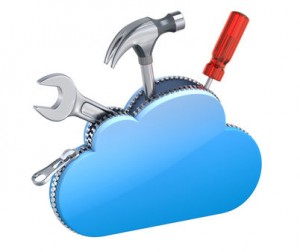Cloud disaster recovery (cloud DR) is keeping a backup of the enterprise data in the cloud. It entails using virtualization to encapsulate the components of the entire on-premises server – with the OS, config files, apps and databases – into a single software bundle. It is possible to transfer this software bundle between the cloud server and the on-premises server or between different data centers pretty easily.
Most leading cloud providers such as VMware offer cloud DR services in varying flavors. VM Ware’s Disaster Recovery to the Cloud Services, for instance, allows applying disaster recovery to all apps and sites besides automating the task.
Cloud DR is fast growing in popularity and for good reasons too.
When a major disaster such as fire, hurricane or flood strikes, the odds are that on-premises servers, hard drives and disks would all go down. As such, it makes little sense to keep a duplicate copy of the data at the same physical location, even if in a different medium. The cloud offers resilience and redundancy. Decent cloud providers maintain data centers at multiple centers all around the world to ensure that even if the on-premises server in one location goes down, data would still be available from another location.
The benefits offered by Cloud DR goes beyond ensuring that the data survives anything short of a global apocalypse. Companies whose very existence depends on being online can switch over to their cloud backup and resume operations from anywhere in the world even when their physical offices are reduced to rubble.
The virtual server that cloud CR generates is hardware independent and as such, makes it easy to transfer it among data centers. Restoration also becomes a piece of cake with the system admin spared of the nightmare of having to reinstall the components one by one.
Finally, the odds are that cloud DB would cost less and involve much lesser hassles than conventional on-premises backup. It is scalable as well.
However, cloud DB, like most cloud offerings comes with its fair share of issues.
Many enterprises resist migration to the cloud as they remain leery of giving up control over their sensitive data. However, they have no qualms about entrusting the same data with the same third-party cloud provider for backup, regardless of the fact that the risks remain the same. Data still moves from the on-premises server to the cloud server and remain prone to interception. There is also the real chance of omnipresent cyber criminals breaching the cloud-providers’ servers and taking off with the data.
For enterprises hoping to resume operations using their cloud DB in the eventuality of a disaster, the ability to do so will depend on having access to bandwidth and the network capacity to redirect users to the cloud. Again, storing data in the cloud is one thing, restoring it is quite another. It requires competent hands to retrieve and restore the data from the backup.

